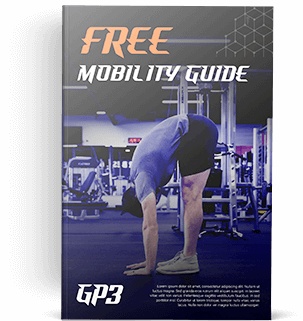Key Points:
- Hoping to never experience cravings and hunger is a recipe for misery, but don’t despair!
- The “Ten Fetters” model of Buddhism offers us a quite grounded practice for helping overcome cravings.
- This practice will benefit us in other areas of our lives as well, not simply with weight loss.
Estimated reading time: 5-10 minutes
Listen to this article on Spotify!
To follow up on last week’s piece about Ozempic, we’re going to continue to focus on fat loss, albeit through about as different a route as possible. I was inspired to write this when reflecting that it’s been over a year since I emerged back into the world of light, having spent 200 straight hours alone in a pitch black room. This profound, meditative experience led to some deep insights as well as practical, real-world benefits. The last bit is important, as a younger version of myself would have dismissed much in the realm of spiritual exploration as pointless.
While I no longer feel that way, and practical benefits are more a side bonus than the explicit purpose of pursuing deeper wisdom, I still find it rewarding to find examples that tick both boxes. Hence, today’s topic.
And at first glance, it might seem like a strange question. After all, wasn’t the Buddha always depicted as a rather rotund fellow? Wouldn’t he also say that our existence is so much more than a simple, physical body that we shouldn’t worry too much about something as trivial as its appearance or weight?
The answers to both questions might well be yes, but that doesn’t mean we can’t still take a Buddhist lesson into an area where millions of people struggle and experience both physical and emotional pain.
The Ten Fetters Model
A couple months ago, I stumbled upon a fascinating concept taught in various Buddhist circles, known as the “Ten Fetters Model.” Basically, a fetter is a false belief that keeps us metaphorically chained and mentally suffering. Once we see that one of these beliefs is incorrect, it simply drops away. As a result, we’ll feel lighter, more at ease, and less restricted.
Should the illusory nature of all ten fetters be clearly seen, one would be as “enlightened” or “liberated” as the Buddha, himself. Perhaps that may sound too high-falutin and “woo-woo” for some, but interestingly, the process of exploring and dropping most fetters doesn’t involve sitting for hours in cross-legged meditation chanting “Aum,” a thousand times. Instead, doing so requires much more grounded, worldly practices.
Today, we’ll focus on fetters four and five, “Desire and Ill Will,” because the method used to weaken and ultimately break them applies perfectly to the struggle for reducing one’s body fat.
“Stay in the gap.”
These two fetters primarily have to do with reactivity. The hidden belief we’re trying to root out says something like, “I have to react in this exact way when this exact situation arises. Every time, no matter what.” Working towards breaking it involves attempting to catch ourselves acting in an automatic, unconscious way. At first, this won’t happen until after we act, but the time between reacting and noticing the reaction will grow smaller and smaller.
Eventually, we’ll notice ourselves wanting to react a certain way before the reaction happens. This doesn’t necessarily mean we won’t act, but it does mean action won’t happen automatically and unconsciously.
Here are two situations in which this could apply:
Scenario A: Someone cuts you off in traffic, so you immediately change lanes, speed up next to them, honk your horn, and flip them off.
Scenario B: A thought pops into your head that you want something sweet, so you immediately run to the pantry and grab a stack of Oreos.
With this practice, in whichever situation you find yourself “triggered” or called into unconscious, automatic action, you try to stay in the space between realizing you feel compelled to act and actually acting.
This can be way harder than it sounds, and Buddhist teacher Kevin Shanilec recommends finding an issue that isn’t so difficult that you “fly through the gap” without a second’s pause. So, for example, perhaps Situation A (traffic) is too tough at the moment, but you feel much more capable of handling Situation B (sweet tooth). Perfect, start there.
And that’s why I think this principle applies perfectly to nutrition goals.
Many of us struggle with hunger and cravings for specific calorie-dense treats. However, I’d venture to guess that few of us sprint to the fridge the second we feel hunger. As I’ve written before, mastering moderate hunger is a key nutritional skill for maintaining an optimal body fat percentage. Also, building this skill offers us the perfect avenue to “explore the gap.”
Best practice starts with noticing the thought that says, “I want something sweet.” If we don’t recognize it, we’ll probably act upon it long before we realize what’s happening. Luckily, the walk to the pantry or trip to the drive-thru offers a convenient gap in which to bring awareness to our potential to act up on the thought in question. Okay, so what do we do after noticing it?
Well, now that we’re “in the gap,” the next key step is to ask ourselves a variation of the following question. “Is there any reason I need to act upon this thought right now?” There are a couple follow-up questions that may be helpful, as well. “If I must act right now, what is the reason?” or “Is there any reason my action must take this exact form?”
Beware of follow up thoughts that say, “This is stupid,” or, “Of course there’s a reason, I’m hungry.” Those thoughts are trying to get you to blast through the gap. But as you’ll know if you regularly read this blog, humans have over 60,000 thoughts per day, and many of them are simply wrong. Obviously, the chance of dying of starvation due to delaying a mad dash for the tortilla chips is quite slim. So, you can quickly dismiss any thought that tries to tell you otherwise.
How long you stay “in the gap” is up to you.
After first finding and then minding the gap, you may or may not choose to still act upon whatever thought initially called you to action. Here’s the great news. Either option is perfectly fine; the outcome doesn’t really matter. Crucially, however, each time you practice staying in the gap, you’ll develop multiple key skills.
- Your ability to sit in discomfort instead of immediately trying to get rid of it
- Your ability to see that not every thought needs to be believed or acted upon, especially not immediately
- Your ability to delay gratification
The more you practice, the less likely you are to eat mindlessly or feel as if hunger and cravings have some sort of magical and unfair hold over you. Instead, they’ll simply be seen as thoughts and sensations that may or not ultimately be acted upon.
The freedom this realization offers can’t be understated.
Nutrition poses challenges to so many people because it’s simple but far from easy. Eating is also the one potential “addiction” that’s impossible to quit cold turkey. On top of that, unfathomable amounts of conflicting information exist, and it’s highly seductive to turn one’s nutritional preferences into firm beliefs and identities. But in the end, all you’re really looking for is this:
- Meals with enough variety
- That you enjoy eating
- That agree with your digestive system
- And keep you full what you deem “long enough” relative to their caloric content
Foods like Oreos, chips, french fries, and pizza may indeed be part of this equation. Or, they may not be. But far too often for those of us unhappy with our waistlines, those treats aren’t used to address hunger. Instead, they become tools to combat boredom, stress, anxiety, and even a fear of missing out. Unsurprisingly, tasty foods work to quell these sensations incredibly effectively, but often with the side effect of unwanted weight gain.
Practicing finding and then staying in the gap between thought and action will help us deal with those sensations of discomfort. I won’t lie to you and say that it’ll be easy. Especially at first, it probably won’t be. It may even be profoundly uncomfortable at times. But I promise it will be worth it.
Plus, these newfound skills can be applied to nearly any situation in your life. Family, work, hobbies, traffic, the frustrating tedium of events like a trip to the DMV, you name it. Your ability to handle these situations with peace and equanimity will inevitably improve. And that will benefit not only you, but anyone with whom you come into contact.
Sounds pretty great, huh? Plus, if you’re looking to imitate the Buddha, this practice probably beats fasting under a tree for 49 days. Though that probably would lead to some serious fat loss!
Before you go, I’d love to hear from you. How difficult do you think it will be to “stay in the gap?” Which foods do you find it hardest to resist? Do you think you’ll give this a try? Reply to this email and let me know!

